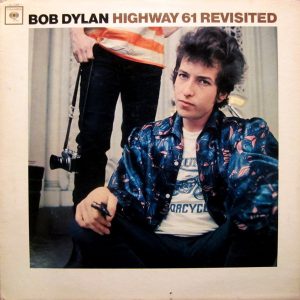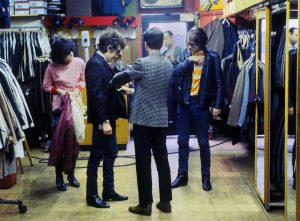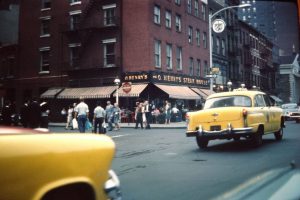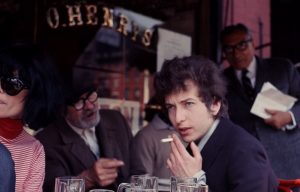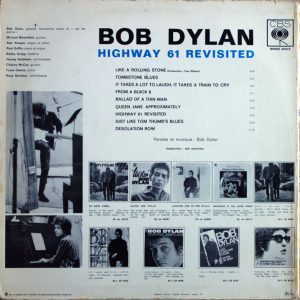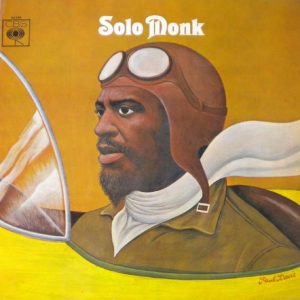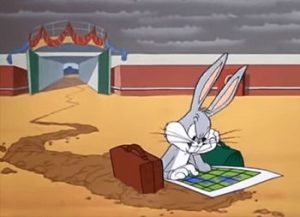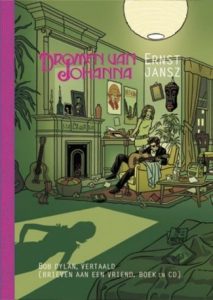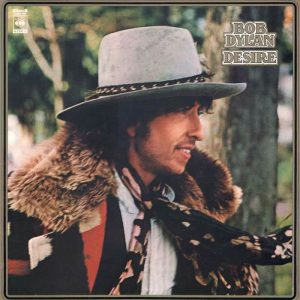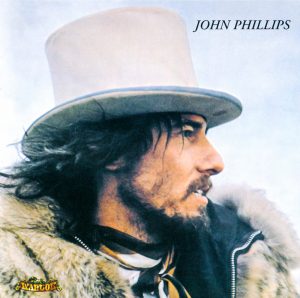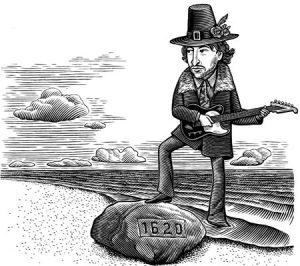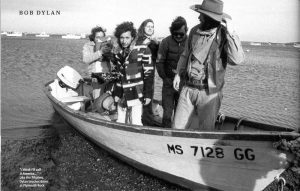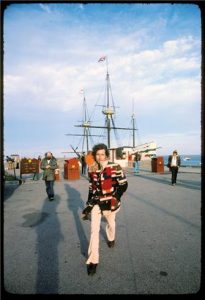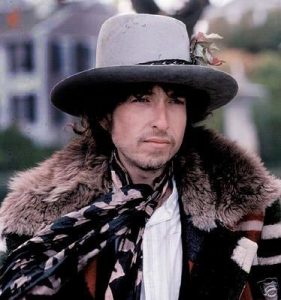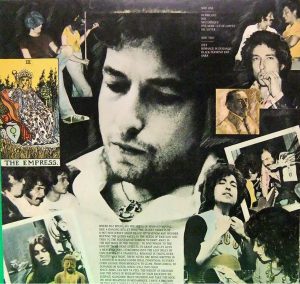- Million Miles part 1: The closer I get, the farther away I feel
- Million Miles part 2: They kind of write themselves
by Jochen Markhorst
III And thou didst commit whoredom with them
You took the silver, you took the gold You left me standing out in the cold People asked about you, I didn’t tell them everything I knew Well, I’m tryin’ to get closer but I’m still a million miles from you
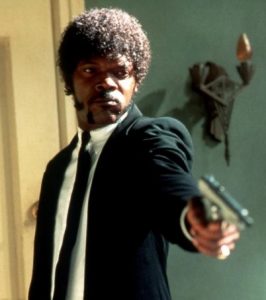 Jules (Samuel L. Jackson) considers it very cool and also makes a point of mentioning the source of the quotation; “There’s a passage I got memorized, seems appropriate for this situation: Ezekiel 25:17.” And then he quotes a big chunk of the Bible text (94 words), ending with the words And you will know I am the Lord when I lay my vengeance upon you, and usually he then blasts his audience away. But today is different. “I been sayin’ that shit for years,” Jules says in the last scene (Pulp Fiction, 1994) to the petrified “Pumpkin”, the robber who tried to take Jules’ valuable briefcase,
Jules (Samuel L. Jackson) considers it very cool and also makes a point of mentioning the source of the quotation; “There’s a passage I got memorized, seems appropriate for this situation: Ezekiel 25:17.” And then he quotes a big chunk of the Bible text (94 words), ending with the words And you will know I am the Lord when I lay my vengeance upon you, and usually he then blasts his audience away. But today is different. “I been sayin’ that shit for years,” Jules says in the last scene (Pulp Fiction, 1994) to the petrified “Pumpkin”, the robber who tried to take Jules’ valuable briefcase,
“… and if you ever heard it, it meant your ass. I never really questioned what it meant. I thought it was just a coldblooded thing to say to a motherfucker ‘fore you popped a cap in his ass.”
It is cool, indeed. Well, coldblooded even. And the fact that it is actually not a correct Ezekiel quote is not that important. It is in fact an insider’s wink from director and scriptwriter Quentin Tarantino to one of his heroes from the 1970s karate films, Sonny Chiba, who paraphrases Ezekiel (in Karate Kiba, 1973). It does bring Ezekiel back into the spotlight, though.
In 2001, Dr Eric Altschuler, a neuroscientist at the University of California, San Diego, makes the BBC News. He diagnoses some 26 centuries after the patient’s death, a form of epilepsy in the prophet Ezekiel. Temporal lobe epilepsy, to be precise; a disease that can affect the functions of speech, memory and levels of awareness, and “in very rare cases people with the condition can develop symptoms such as hyper religiosity and hypergraphia.”
It is these symptoms in particular that lead Dr Altschuler to his provocative diagnosis; Ezekiel was indeed not only extremely religious but also rather verbose and, well, long-winded. His Bible book indeed is one of the longest, which is mainly due to the author’s verbosity. So stylistically, it is not really a highlight. This hypergraphia, compulsive writing, does make the book really impenetrable at times. That, and presumably all those apocalyptic visions, may also explain why Jews were not allowed to read the book before their thirtieth birthday.
Throughout the ages it is nevertheless, despite its tiresome style, a popular book; Ezekiel’s visions are bloodcurdling and breathtaking, his metaphors particularly evocative, and some of his adventures, such as those in the Valley of Dry Bones, have a pleasantly scary fantasy quality. The book is a constant in Dylan’s oeuvre as well. Quotations, references and allusions can be found in “Blowin’ In The Wind” and “Sad-Eyed Lady Of The Lowlands”, in “This Wheel’s On Fire” and “Angelina”, in “Dignity”, and with some tolerance for what may be classified as “reference” or “influence”, in even more songs.
Like in this second verse of “Million Miles”;
“Thou hast also taken thy fair jewels of my gold and of my silver, which I had given thee, and madest to thyself images of men, and didst commit whoredom with them.”
…says the pissed Ezekiel in 16:17, poetically railing against those naughty inhabitants of Jerusalem, who deceive God with all kinds of idols. Which has at most very indirectly something to do with “Million Miles”, but You took the silver, you took the gold Dylan seems to take, including the narrative perspective, to his song. And then actually only based on that thou hast taken / you took similarity – the sole combination “gold and silver” we know, after all, from hundreds of stories, songs and poems. Including Dylan songs, by the way; “High Water”, “Seven Curses”, “10,000 Men”, “Silvio”, “Boots Of Spanish Leather”, “You Changed My Life”, “Unbelievable”… and those are by far not all the songs in which Dylan sings “silver and gold”.
The silver and gold from the legendary “The Prisoner’s Song” (1924) is not in this list, but it seems to be a song that keeps haunting Dylan’s mind in these turn-of-the-century years. The status of “The Prisoner’s Song”, one of the greatest hits of the 1920s and indeed one of the greatest hillbilly hits ever, is undisputed. Dylan cites the song in his autobiography Chronicles as a benchmark, as an example of a song that has the power to elevate history to mythology;
“Either one of those guys, Stevens or Roosevelt or even Morgan could have stepped out of a folk ballad. Songs like “Walkin’ Boss,” “The Prisoner’s Song” or even one like “Ballad of Charles Guiteau.” They’re just in there somewhere, though maybe not in a specific way.”
… and the short song (154 words) inspires him more than once to write his own songs. The first verse, for example;
Oh I wish I had someone to love me yes someone to call me their own
Oh I wish I had someone to live with cause
I'm tired of living all alone
Please meet me tonight in the moonlight
please meet me tonight all alone
For I had a sad story to tell you it's a story
that's never been told
… doesn’t seem too dazzling, but that one line Please meet me tonight in the moonlight please meet me tonight all alone apparently has enough impact to inspire Dylan to write an entire song, “Moonlight”, in 2001;
The seasons they are turnin’ And my sad heart is yearnin’ To hear again the songbird’s sweet melodious tone Meet me in the moonlight alone
As we also hear the end of the song, Now if I had the wings of an angel over these prison walls I would fly returning, in variants, in dozens of songs. In “Watching The River Flow”, for example (“If I had wings and I could fly I know where I would go”), in “Spike Driver’s Blues” by Mississippi John Hurt and in Sleepy John Estes’ “Sweet Mama”, but which ultimately, of course, can all be traced back to one of the most beautiful songs of the twentieth century, to “Fare Thee Well”, the song from Dink who complains that her lover seems to be a million miles away;
If I had wings like Noah's dove, I'd fly up da river to the man I love. Fare thee well, O Honey, fare thee well
… “Dink’s Song”, as Alan Lomax calls the song when he writes it down in 1908. It is also part of Dylan’s repertoire and is an indestructible song that in every version has the power to move. Dylan played the song first in ’61, and undoubtedly admired the versions of Pete Seeger, Harry Belafonte, Dave Van Ronk and whoever else.
But the most beautiful twist the song receives in 2016, at the end of episode 20 of the eleventh season of the successful TV series Supernatural, when “God” reveals himself. It was Chuck all along. “God”, Chuck, has given himself the skill to play guitar, and, lonely on the stage of a small-town café in front of a one-man audience, he performs a crushing “Dink’s Song”. Every word, in this context, sung by God, gets a new meaning.
… more moving than all the visions of Ezekiel put together.
To be continued. Next up Million Miles part 4: What’s it all coming to?
————-
Jochen is a regular reviewer of Dylan’s work on Untold. His books, in English, Dutch and German, are available via Amazon both in paperback and on Kindle:
- Blood on the Tracks: Dylan’s Masterpiece in Blue
- Blonde On Blonde: Bob Dylan’s mercurial masterpiece
- Where Are You Tonight? Bob Dylan’s hushed-up classic from 1978
- Desolation Row: Bob Dylan’s poetic letter from 1965
- Basement Tapes: Bob Dylan’s Summer of 1967
- Mississippi: Bob Dylan’s midlife masterpiece
- Bob Dylan’s Greatest Hits
- John Wesley Harding: Bob Dylan meets Kafka in Nashville
- Tombstone Blues b/w Jet Pilot: Dylan’s lookin’ for the fuse
- Street-Legal: Bob Dylan’s unpolished gem from 1978
- Bringing It All Back Home: Bob Dylan’s 2nd Big Bang

